
Winter Running Tips: Wear Layers
When winter running, layering allows the warm air from your body to act as an insulator. “Clothing should be made from synthetics, which are lightweight and draw moisture away from the skin,” says Bowen. Non-synthetic materials trap moisture-if you sweat, your clothes will get wet, causing discomfort and chafing.
How to Layer:
- Balaclava or toque
- Mittens
- Fleece pullover over a thin long-sleeve top
- Light jacket with reflective material
- Thin long johns under tights or loose pants
- Regular running shoes.
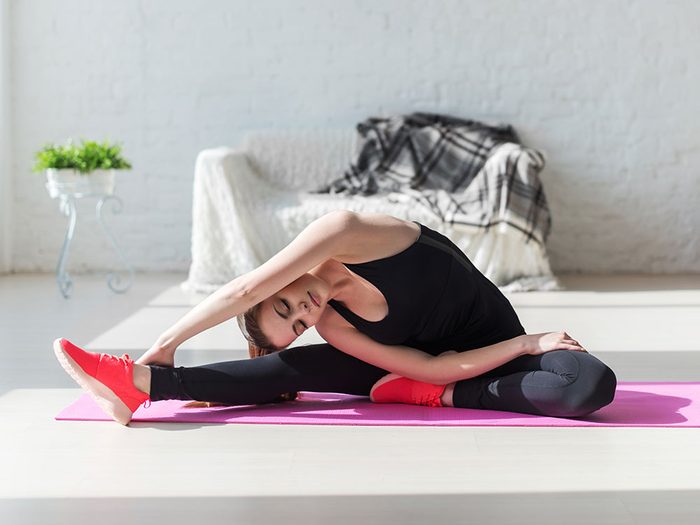
Winter Running Tips: Warm Up and Stretch Indoors
Warming up is important, especially if you’re winter running. “In order to stretch properly to help prevent muscle strains, warm up by performing two or three minutes of moderate exercise indoors, such as walking on a treadmill, jumping rope or doing a few sets of stairs, then do your stretching routine,” says Janna Wentzell, an instructor at Acadia University’s School of Recreation Management and Kinesiology in Wolfville, N.S. “In winter, warming up and stretching inside may be a better choice because you’re more likely to stretch thoroughly in a warm, comfortable environment than out in the cold.”

Winter Running Tips: Protect Your Skin and Eyes
If it’s sunny, the reflection from snow can cause sunburn, so apply sunscreen. When winter running into the sun, wear sunglasses. “You can put a thin layer of Vaseline on your face and lips to prevent cracking,” says Bowen, who always wears lip balm when he runs.
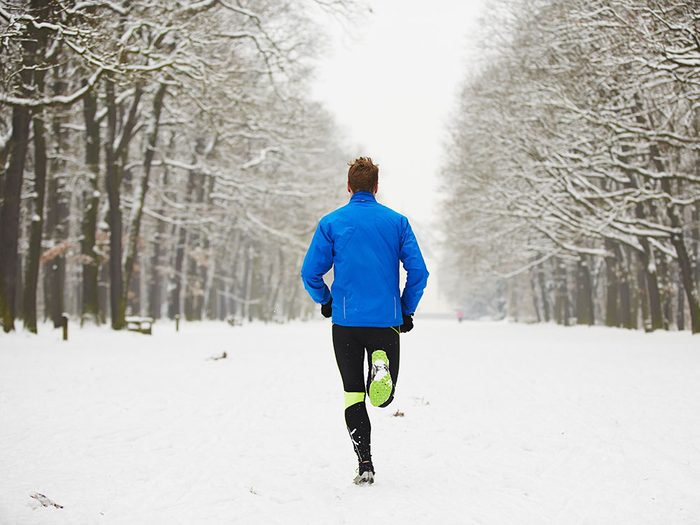
Winter Running Tips: How to Avoid Frostbite
How fast frostbite develops depends on the temperature during your winter run, wind chill factor and how well the affected body part is protected. The American College of Sports Medicine recommends, “heightened surveillance of exercisers be used at wind-chill temperatures below -27ºC.” Wentzell says, “If you feel burning and tingling followed by numbness and then nothing, and if skin is hard, pale and cold, you could have frostbite.” To treat frostbite, cover the affected area and pat gently with warm, wet cloths.
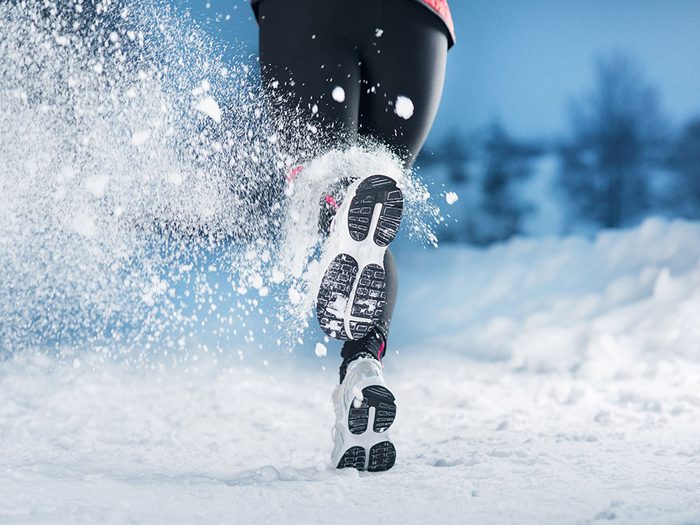
Winter Running Tips: How to Avoid Falling on Ice
“Grippers” with metal studs or wires-pulled over sneakers-offer traction on slippery surfaces. “I’ve never gotten used to them,” admits Bowen about winter running, “so instead I shorten my stride and slow my pace.”
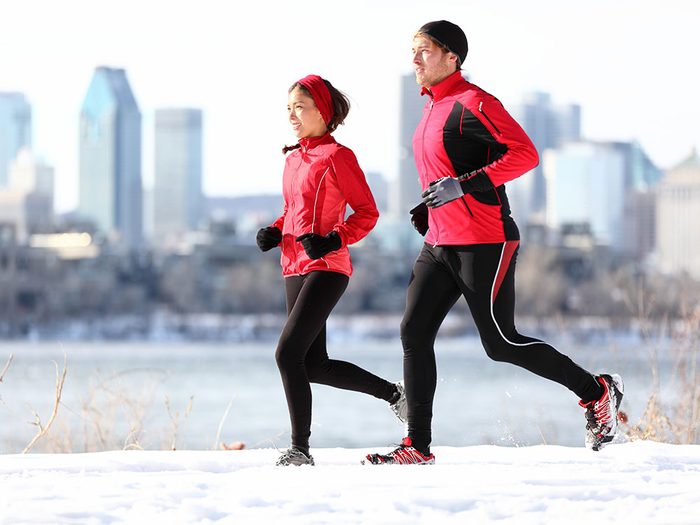
Winter Running Tips: Run with Someone
“The best safety precaution is to run with a partner or group,” says Bowen. If you’re winter running solo, he advises taking a cellphone, sticking close to home and letting someone know your route and what time you plan to return.
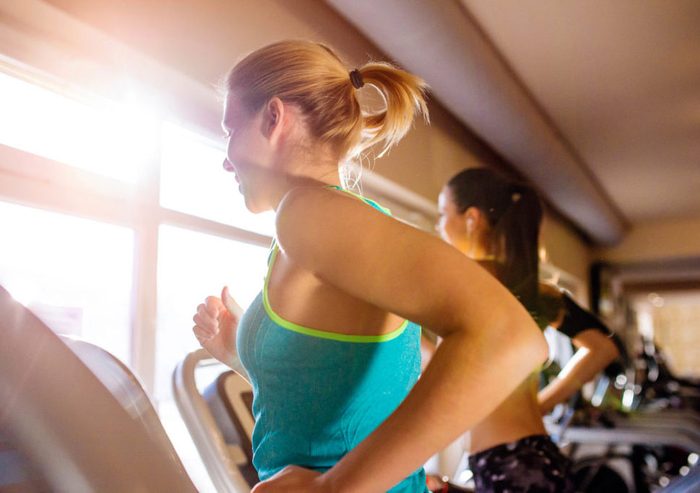
Winter Running Tips: Know When to Stay Inside
Work out indoors, and opt out of the winter run on days when the temperature dips below -27ºC, including the wind chill, or when the sidewalks are just too icy. “Cross-train on an elliptical machine, ski, skate or snow-shoe,” suggests Wentzell. “There’s nothing wrong,” adds Bowen, “with hitting the indoor track or the treadmill.”